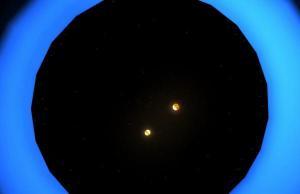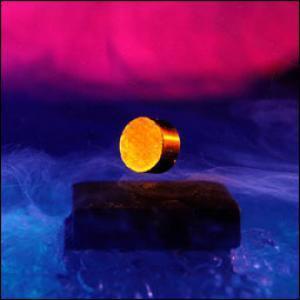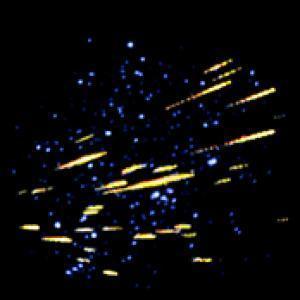For the first time, astronomers have observed the initial phase in the formation of an earth-like planet. The discovery, highlighted in the March 13th issue of
Nature, was documented by a team of astronomers led by William Herbst, the Van Vleck Professor of Astronomy professor at Wesleyan, and Catrina Hamilton PhD '03, professor of physics and astronomy at Dickinson College.

|
| ©Wesleyan University
|
| The binary stars orbit inside a protoplanetary disk or ring that extends out to roughly the size of Jupiter's orbit.
|



